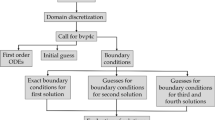Abstract
Implementing particle image velocimetry (PIV) in particle-laden flows is a challenging task due to the optical effects of the added particles. The addition of particles reduces optical access in the measurement region, degrades image quality and increases the experimental uncertainty. One method for reducing this effect is by using refractive index matching (RIM) which matches the index of refraction of the fluid and added particles rendering the particles optically transparent. Exact matching of the refractive index is difficult to achieve in practice. Even slight mismatches in the refractive indices lead to degradation of the image quality which will impact the higher-order statistics. Comparisons of statistics between loading levels are difficult under these conditions. In this work, the effect of processing methodology on RIM PIV images is investigated. RIM is achieved through the use of superabsorbent hydrogel materials in water. Two processing methods are investigated. The baseline method is a basic PIV correlation process without any pre- or post-processing. The refined process utilizes image pre-processing, data post-processing, and experimental error compensation. The goal for the refined method was to optimize and implement a more sophisticated PIV processing routine using existing commercial software on a particle-laden flow to reduce progressive error artifacts. Images from a fully turbulent channel flow with particle loading levels of 0–15% are utilized. Past literature indicates that turbulence levels will be attenuated for the particles used. Turbulence levels calculated using the baseline method show a linear increase with increasing loading, which is a non-physical result. The refined processing method shows a slight attenuation of turbulence which is consistent with expectations. The study highlights the need for careful processing and interpretation of results in cases where changes in image quality can be expected between different experimental conditions.
Graphic abstract
















Similar content being viewed by others
References
Bellani G, Variano EA (2012) Slip velocity of large neutrally buoyant particles in turbulent flows. New J Phys 14(12):125009
Bellani G, Byron ML, Collignon AG, Meyer CR, Variano EA (2012) Shape effects on turbulent modulation by large nearly neutrally buoyant particles. J Fluid Mech 712:41–60
Bernardo-Gil G, Esquivel M, Ribeiro A (1990) Densities and refractive indices of pure organic acids as a function of temperature. J Chem Eng Data 35(2):202–204
Budwig R (1994) Refractive index matching methods for liquid flow investigations. Exp Fluids 17(5):350–355
Byron ML, Variano EA (2013) Refractive-index-matched hydrogel materials for measuring flow-structure interactions. Exp Fluids 54(2):1456
Cisse M, Saw E-W, Gibert M, Bodenschatz E, Bec J (2015) Turbulence attenuation by large neutrally buoyant particles. Phys Fluids 27(6):061702
Coleman HW, Steele WG (1995) Engineering application of experimental uncertainty analysis. AIAA J 33(10):1888–1896
Elghobashi S (1994) On predicting particle-laden turbulent flows. Appl Sci Res 52(4):309–329
Gore R, Crowe CT (1989) Effect of particle size on modulating turbulent intensity. Int J Multiph Flow 15(2):279–285
Gore R, Crowe C (1991) Modulation of turbulence by a dispersed phase. J Fluids Eng 113(2):304–307
Gui L, Longo J, Stern F (2001) Towing tank PIV measurement system, data and uncertainty assessment for dtmb model 5512. Exp Fluids 31(3):336–346
Hetsroni G (1989) Particles-turbulence interaction. Int J Multiph Flow 15(5):735–746
Hopkins L, Kelly J, Wexler A, Prasad A (2000) Particle image velocimetry measurements in complex geometries. Exp Fluids 29(1):91–95
Hosokawa S, Tomiyama A (2004) Turbulence modification in gas-liquid and solid-liquid dispersed two-phase pipe flow. Int J Heat Fluid Flow 25(3):489–498
Kadambi JR, Charoenngam P, Subramanian A, Wernet MP, Sankovic JM, Addie G, Courtwright R (2004) Investigations of particle velocities in a slurry pump using PIV: part 1, the tongue and adjacent channel flow. J Energy Res Technol 126(4):271–278
Lazar E, DeBlauw B, Glumac N, Dutton C, Elliott G (2010) A practical approach to PIV uncertainty analysis. In: 27th AIAA aerodynamic measurement technology and ground testing conference, p 4355
Lien K, Monty J, Chong M, Ooi A (2004) The entrance length for fully developed turbulent channel flow. In: 15th Australian fluid mechanics conference, vol 15, pp 356–363
Neal DR, Sciacchitano A, Smith BL, Scarano F (2015) A collaborative framework for PIV uncertainty quantification: the experimental database. Meas Sci Technol 26(7):074003
Paul S, Tachie M, Ormiston S (2007) Experimental study of turbulent cross-flow in a staggered tube bundle using particle image velocimetry. Int J Heat Fluid Flow 28(3):441–453
Schultz M, Flack K (2007) The rough-wall turbulent boundary layer from the hydraulically smooth to the fully rough regime. J Fluid Mech 580:381–405
Sciacchitano A, Neal DR, Smith BL, Warner SO, Vlachos PP, Wieneke B, Scarano F (2015) A collaborative framework for PIV uncertainty quantification: comparative assessment of methods. Meas Sci Technol 26(7):074004
Shokri R, Ghaemi S, Nobes D, Sanders R (2017) Investigation of particle-laden turbulent pipe flow at high-Reynolds-number using particle image/tracking velocimetry (PIV/PTV). Int J Multiph Flow 89:136–149
Tanaka T, Eaton JK (2008) Classification of turbulence modification by dispersed spheres using a novel dimensionless number. Phys Rev Lett 101(11):114502
Westerweel J, Scarano F (2005) Universal outlier detection for PIV data. Exp Fluids 39(6):1096–1100
Wiederseiner S, Andreini N, Epely-Chauvin G, Ancey C (2011) Refractive-index and density matching in concentrated particle suspensions: a review. Exp Fluids 50(5):1183–1206
Wieneke B (2015) PIV uncertainty quantification from correlation statistics. Meas Sci Technol 26(7):074002
Zisselmar R, Molerus O (1979) Investigation of solid liquid pipe flow with regard to turbulence modification. Chem Eng J 18(3):233–239
Author information
Authors and Affiliations
Corresponding author
Additional information
Publisher's Note
Springer Nature remains neutral with regard to jurisdictional claims in published maps and institutional affiliations.
Rights and permissions
About this article
Cite this article
Bluestein, A.M., Bohl, D. Development and validation of a PIV processing routine for two-phase index-matched flows. J Vis 23, 951–970 (2020). https://doi.org/10.1007/s12650-020-00680-9
Received:
Revised:
Accepted:
Published:
Issue Date:
DOI: https://doi.org/10.1007/s12650-020-00680-9




